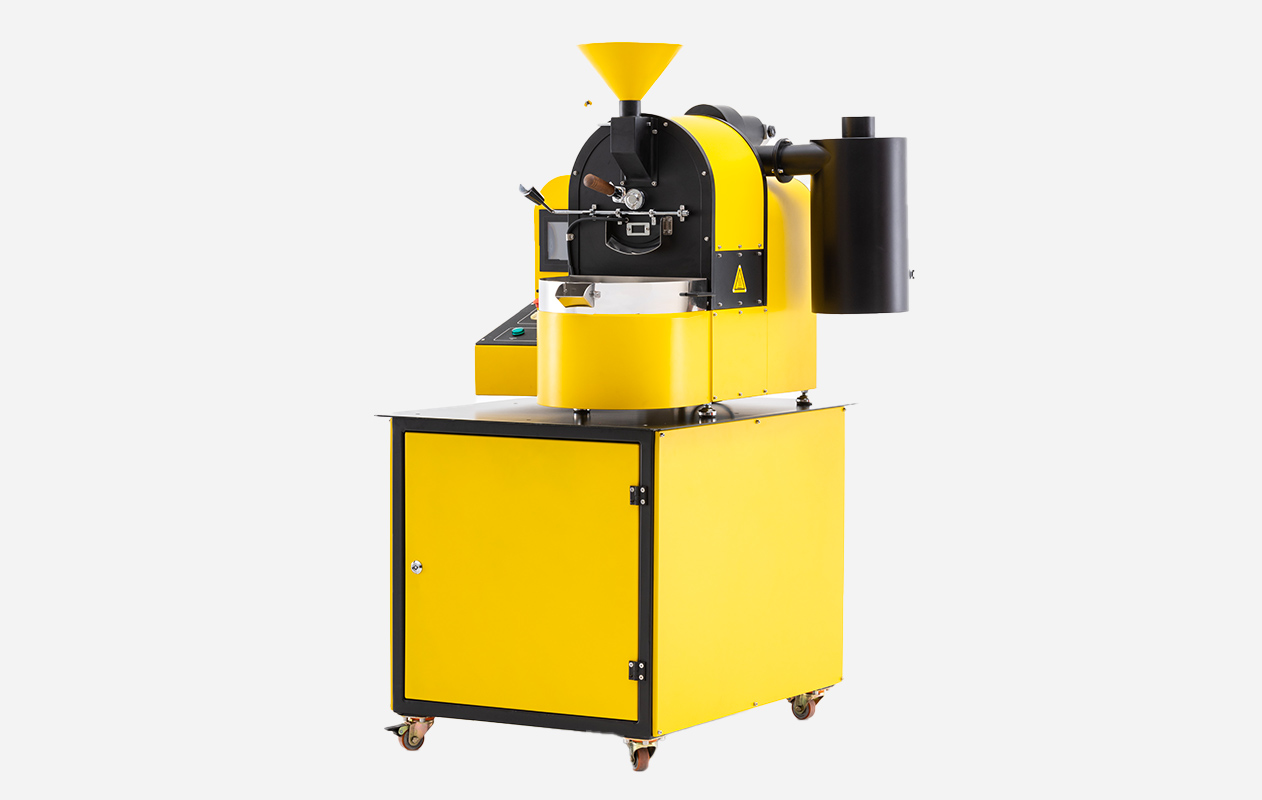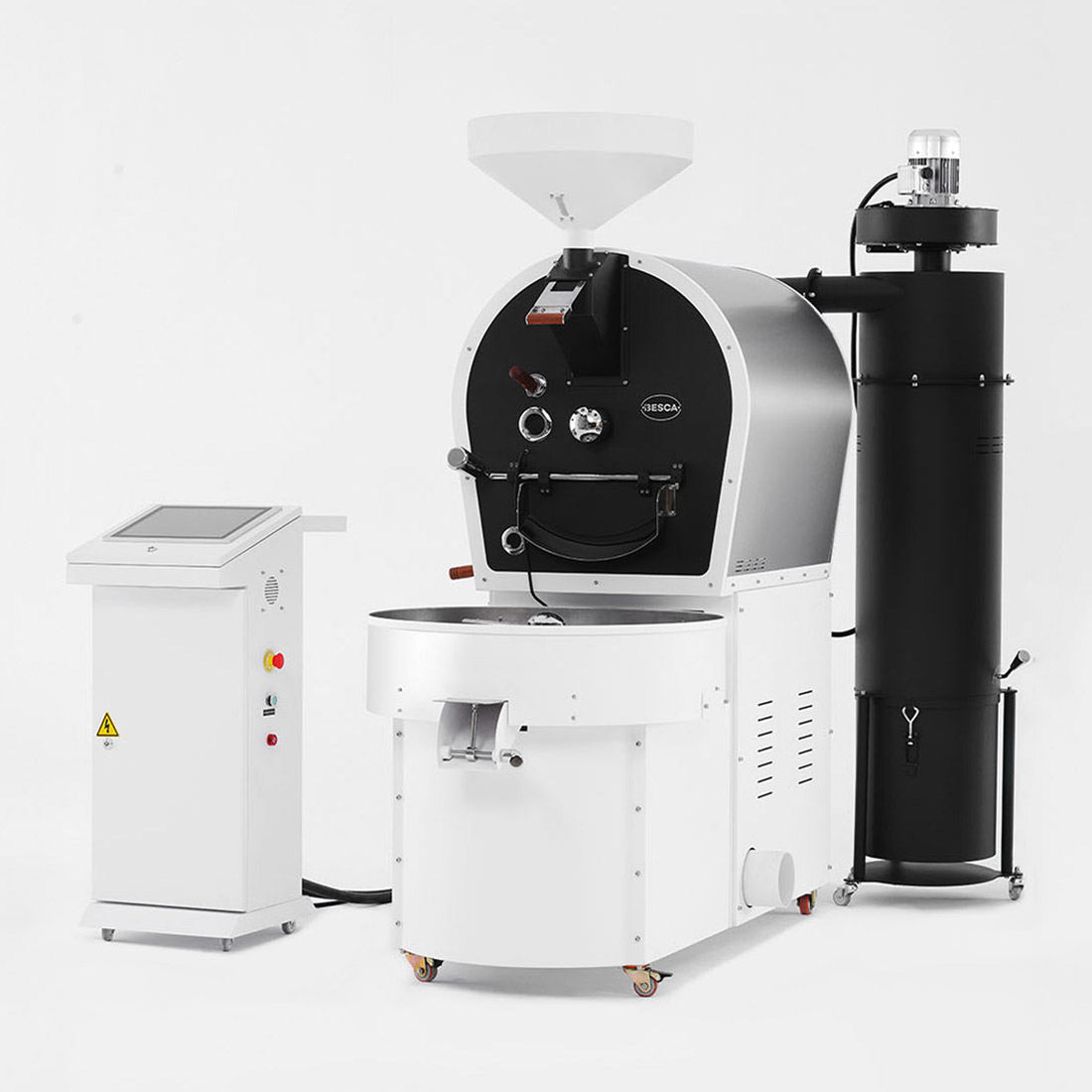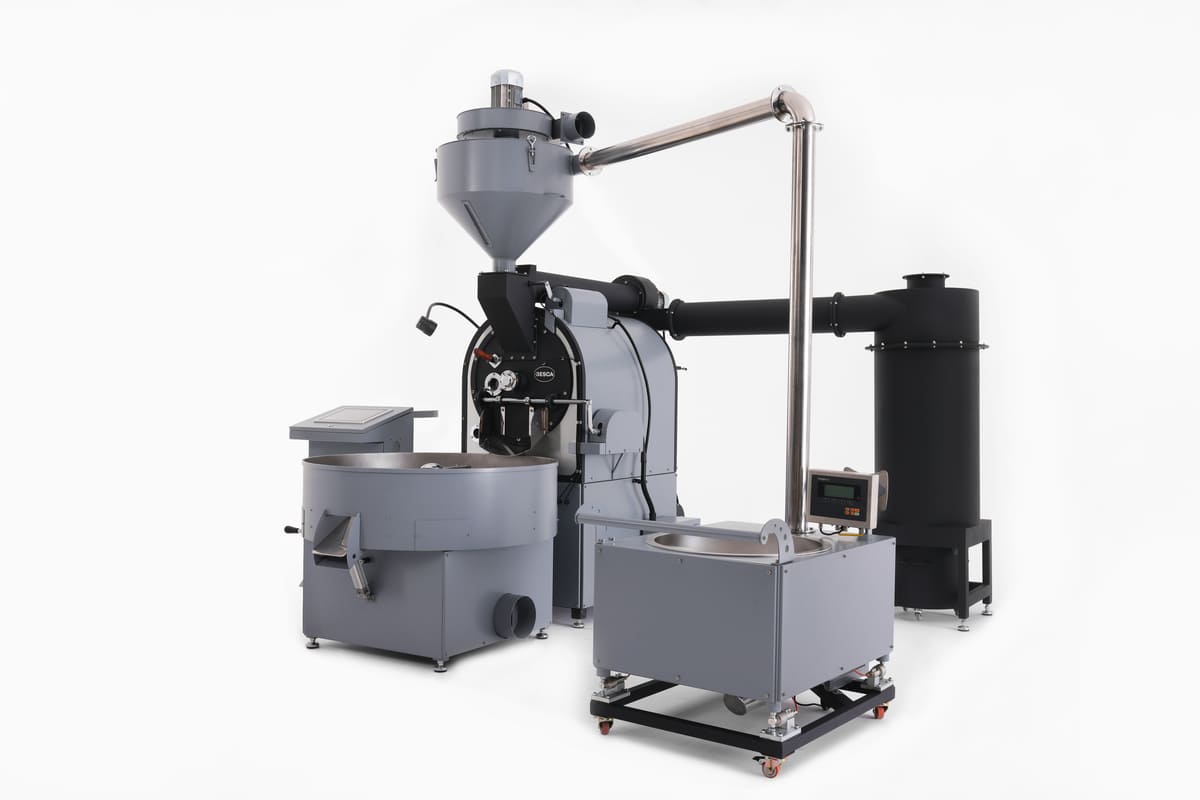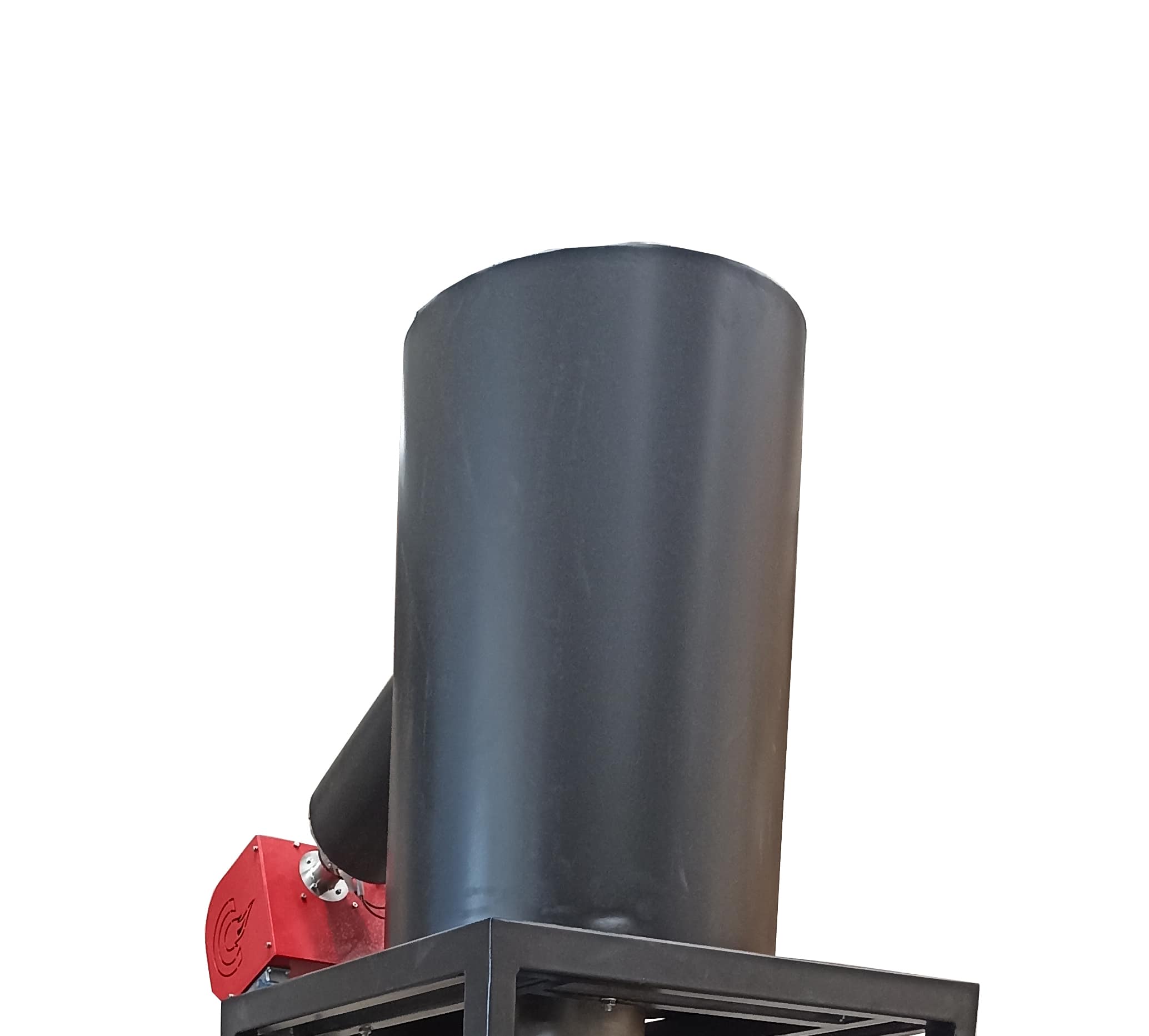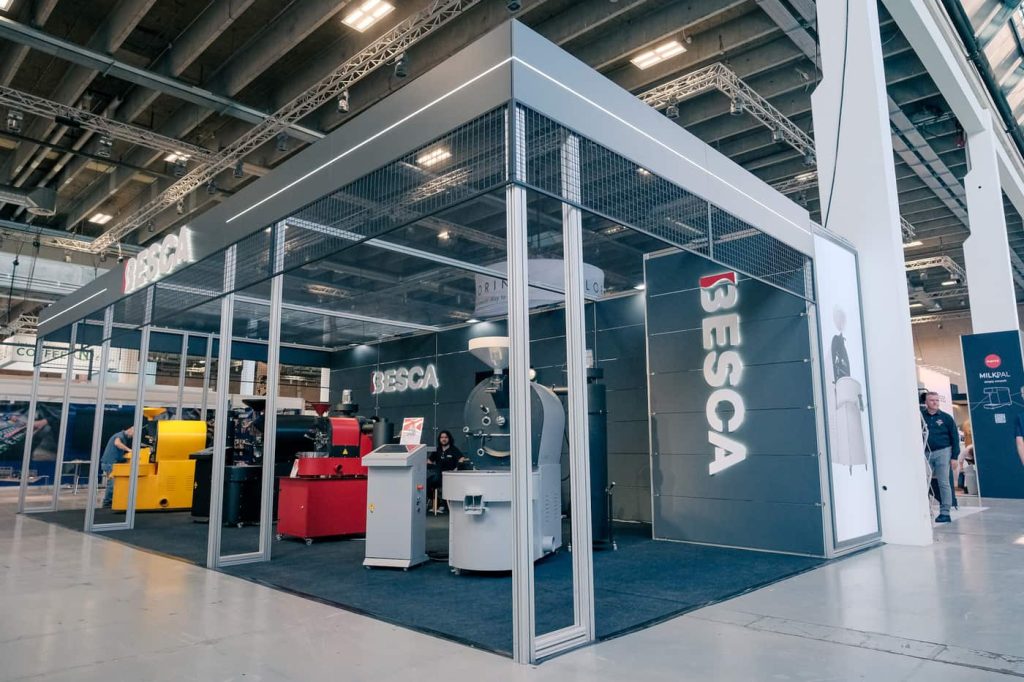The drum inside the roaster is the realm where the coffee bean’s transformation unfolds. It’s within the confines of this essential component that the beans undergo the crucial process of roasting. The type of drum used in a coffee roaster significantly influences your results. In this blog post, we’ll explore the distinct drum types found in coffee roasters, focusing on perforated drums, fluid bed roasters, single drum roasters, and double drum roasters. Additionally, we’ll dive into the often-overlooked yet critical aspect of drum material and its profound impact on coffee roasting, delving into the intricacies of the coffee roasting process and techniques.
Perforated Drums
Perforated drums, also known as mesh drums, are a prevalent choice among cheap coffee roasters. These drums are characterized by numerous small holes or perforations that facilitate hot air circulation around the coffee beans. While perforated drums offer affordability as a significant advantage, it’s important to note that they come with trade-offs. Their unevenness in roasting can be a drawback, potentially resulting in uneven roasts and, in some cases, leading to burnt coffee beans due to a lack of proper drum insulation, affecting the coffee roasting process.
Fluid Bed Roasters
Fluid bed roasters, sometimes referred to as sputnik roasters, employ a unique approach to coffee roasting. Instead of using a traditional drum, these roasters utilize a system of columns or tubes to suspend coffee beans in a hot air stream. The absence of direct contact between the beans and the drum sets fluid bed roasters apart. This results in rapid, convective-style roasting and typically yields flavor profiles characterized by simple and dry sensory profiles, showcasing a distinct coffee roasting technique.
Single Drum Roasters
Single drum roasters represent a classic option in the coffee roasting world. They are characterized by a single, horizontally oriented drum, like the operation of a clothes dryer. This design encourages beans to tumble as they roast, ensuring even heat distribution and consistent roasting. While single drum roasters provide a traditional approach to coffee roasting, it’s important to be aware of certain limitations. Their lack of insulation in the drum wall can sometimes lead to issues like excessive bitterness, as they tend to heat up the beans rapidly, making precise roast profile control a challenging endeavor, impacting the coffee roasting process.
Double Drum Roasters
Double wall drums are increasingly gaining popularity in the coffee roasting industry due to their superior performance. These roasters are equipped with two horizontally oriented drums, and what sets them apart is their unique double-wall construction. This dual-wall design offers remarkable insulation benefits, although it results in longer preheating times. However, this extra insulation is a game-changer, as it ensures more consistent thermal retention throughout the roasting process. The outcome is an even roast profile and enhanced consistency, effectively minimizing the risk of roast defects such as scorching or facing. Double wall drums are becoming the top choice for coffee roasters who prioritize precision and quality in their roasting endeavors, showcasing advancements in the coffee roasting process.
Importance of Drum Material
In the world of coffee roaster drums, the material used is a critical factor that directly impacts the roasting process and final coffee character. The choice of drum material can influence heat distribution, heat retention, and overall thermal conductivity. For example:
Copper Drums: Copper drums are known for their excellent heat conductivity. They allow for efficient heat transfer to the coffee beans, resulting in a quick roasting process. However, copper drums can be challenging to maintain due to their susceptibility to corrosion, adding a layer of complexity to the coffee roasting process.
Carbon Steel Drums: Carbon steel drums are a popular choice due to their durability and fast heating. They are excellent at retaining heat, leading to consistent roasting profiles. Carbon steel drums are also relatively easy to maintain, making them a favored material compared to copper drums, streamlining the coffee roasting process.
Cast Iron Drums: Cast iron drums are renowned for their exceptional heat retention properties. They maintain a stable temperature throughout the roasting process, ensuring even roasts. However, cast iron drums are heavy, which can make installation and maintenance more cumbersome, adding a layer of complexity to the coffee roasting process.
Rolled Steel Drums: Rolled steel drums offer a balance between durability and heat retention. They are lighter than cast iron drums, making them more manageable for installation and maintenance. Rolled steel drums are an excellent choice for roasters seeking consistent performance without the weight and complexity associated with other materials, contributing to the efficiency of the coffee roasting process.
In conclusion, the choice of drum type in a coffee roaster is a significant decision that directly influences the roasting process and the sensory characteristics of the final coffee. Whether it’s perforated drums, bed roasters, single drum roasters, or double drum roasters, each type offers its distinct approach to coffee roasting. Additionally, the material of the drum itself plays a crucial role in achieving specific roast profiles. Roasters, both small and large, continually explore the possibilities and innovations within these drum types and materials, showcasing the dynamic nature of the evolving coffee roasting process and techniques.

